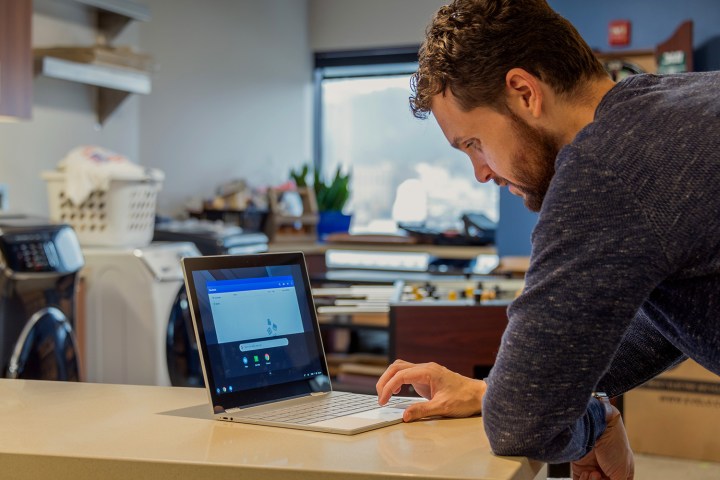
Although many modern devices support gestures like pinch to zoom, Chromebooks have been one notable exception from that list. Not for much longer though: Following the introduction of pinch to zoom to a select few Chromebooks, there’s now a pretty hard suggestion that all Chromebooks will soon support the feature.
The only Chromebooks that currently support pinch-to-zoom functionality are the Google Pixelbook, Chromebook Pixel, Samsung Chromebook Pro, and Chromebook Plus. They didn’t necessarily have the feature from launch, though; before it was added, hints began appearing on the Chromium Gerrit — Chrome OS’s open source code contribution tracker. That seems to be happening once again with all Chromebooks.
A merged commit has appeared on the Chromium Gerrit with mentions of a test deployment of “Pinch” control to “device which doesn’t explicity [sic] have pinch enabled.” As XDA-Developers points out, this commit comes just a few weeks after Google added support for Direct Manipulation on Chrome, which makes it possible for more nuanced multitouch gestures on Windows laptops with Precision Touchpads. Although that doesn’t necessarily mean such support will be added to Chromebooks, it could suggest that Google is putting greater developmental muscle behind gesture control.
There’s no indication from this Chromium commit about when we can expect the pinch-to-zoom functionality to make its way to wider Chrombooks, but it’s clearly in the works. If previous implementations on specific Chromebook devices are anything to go by, it should be introduced sometime in the next few months.
If you want to see whether your existing Chromebook has the new pinch gesture support in the coming weeks or months, all you need do is head to “chrome://flags” and search for “pinch,” as ChromeUnboxed explains. If it is available, you should see a flag titled “pinch scale.”
Chromebooks and Windows operate very differently from each other. If you’d like to know more about their differences, here’s our handy guide to the biggest pros and cons of each. Don’t forget they’re somewhat interchangeable though. If you’d like to learn how to install Windows on a Chromebook, we have a guide for that, too.
Editors' Recommendations
- Google is changing everything you know about Chromebooks
- Google Meet or Zoom? Soon, it won’t matter
- Editing video on Chromebooks just got a lot easier
- Chromebooks could soon borrow Window 11’s best multitasking feature
- Powerful Snapdragon 8cx Gen 2 Chromebooks could be coming soon




